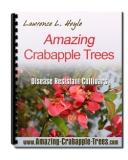PRUNING MADE EASY
Pruning, like any other skill, requires knowing what you are doing to achieve success. To know and practice the rules of pruning is most important, but of equal importance is using the correct tools. Pruning recommendations for most deciduous shrubs consist of thinning out, gradual renewal and rejuvenation pruning. Pruning Groundcovers usually is necessary only to remove unhealthy tissue or to promote spreading.
For large established trees leave the pruning to qualified tree care professionals who have the proper equipment. Pruning, like any other skill, requires knowing what you are doing to achieve success. Pruning, which has several definitions, essentially involves removing plant parts to improve the health, landscape effect, or value of the plant. Pruning can actually be done at any time of the year; however, recommended times vary with different plants. Pruning is a horticultural practice that alters the form and growth of a plant.
Pruning Trees
Trees generally require less pruning than other landscape types in the landscape but may occasionally need corrective pruning to maintain health and vigor. Trees do not heal in the true sense of the word. Trees with properly thinned crowns also resist wind damage better than unpruned trees. Trees with a central leader, such as Red Oak, Sweet Gum or Magnolia, may need little or no pruning except to eliminate branches competing with the central leader. Trees are best pruned during the dormant season. Trees react by closing the wound and compartmentalizing or isolating the injured tissue from the surrounding tissue. Trees that seem badly damaged may live while others apparently only mildly injured may die. Trees and shrubs that bloom early in the growing season on last year growth should be pruned immediately after they finish blooming: Apricot, Amelanchier, Azalea, Flowering Plum, Lilac, Chokeberry or Magnolia, Forsythia and early blooming Spirea.
Pruning Shrubs
Pruning recommendations for most deciduous shrubs consist of thinning out, gradual renewal and rejuvenation pruning. Shrubs that flower before midsummer usually bloom on growth made the previous year. Shrubs grown primarily for their foliage rather than showy flowers should be pruned in spring, before growth begins: alpine currant, dogwood, Purpleleaf cherry, Barberry, Honeysuckles, Sumac, Burning Bush Peashrub. Shrubs that bloom on new growth may be pruned in spring before growth begins. Thinning is the complete removal of branches back to lateral branches, the main trunk, or in shrubs, to the ground. Shrubs that bloom on last year's growth, early in the season should be pruned immediately after they finish blooming. Shrubs that flower in late spring and summer are best pruned in early spring. Shrubs that bloom after midsummer have flowers on the current season's growth; these are pruned in winter or spring. The first pruning after trees and shrubs are purchased consists of removing broken, crossing and pest-infested branches. Avoid shearing shrubs into tight geometrical forms that can adversely affect flowering.
For security purposes, prune shrubs or tree branches that obscure the entry to your home. Pruning young shrubs is not as critical as pruning young tree , but take care to use the same principles to encourage good branch structure. De~n Heading: A form of pruning used on small to medium flowering shrubs to remove spent flowers. Large, old shrubs should not be rejuvenated during late summer, as new growth will be stimulated and possibly killed by cold weather in the winter. When to Prune, Trees and shrubs can be lightly pruned anytime.
Pruning Shears
There are many kinds of hand pruning shears. Two common styles of hand shears are the scissor action and the anvil cut. In scissor action shears, a thin, sharp blade slides closely past a thicker but also sharp blade. Pruning saws, both rigid or folding, are very useful for cutting larger branches that are too large for hand shears. Lopping shears (loppers) have long handles that are operated by both hands Pole pruners usually have a cutter with one hooked blade above and a cutting blade beneath, similar to a large pair of lopping shears. Hand pruners are used for small branch and twig cleanup, pruning saws for larger branches and hedge shears to trim closely clipped formal hedges only.
Pruning, like any other skill, requires knowing what you are doing to achieve success.
Have A Great Story About This Topic?
Do you have a great story about this? Share it!
Order Your New Landscape Design Today!
Always Design Before You Plant!
Click The Above Link To Get Your Dream Design Started Now!

Privacy Disclaimer About Contact This Site Built: Solo Build It
Copyright © 2003 - 2023 by Web-Landscape-Design-Ideas.com.
All rights reserved.


